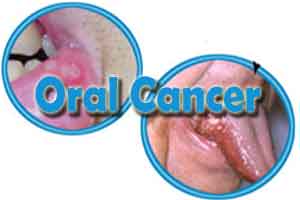- Home
- Editorial
- News
- Practice Guidelines
- Anesthesiology Guidelines
- Cancer Guidelines
- Cardiac Sciences Guidelines
- Critical Care Guidelines
- Dentistry Guidelines
- Dermatology Guidelines
- Diabetes and Endo Guidelines
- Diagnostics Guidelines
- ENT Guidelines
- Featured Practice Guidelines
- Gastroenterology Guidelines
- Geriatrics Guidelines
- Medicine Guidelines
- Nephrology Guidelines
- Neurosciences Guidelines
- Obs and Gynae Guidelines
- Ophthalmology Guidelines
- Orthopaedics Guidelines
- Paediatrics Guidelines
- Psychiatry Guidelines
- Pulmonology Guidelines
- Radiology Guidelines
- Surgery Guidelines
- Urology Guidelines
Crystallization test easily detects oral cancers: Indian Journal of Dental Research study

A new study published in the Indian Journal of Dental Research has reported crystallization test to be an effective, simple, less invasive, and less time-consuming screening method in detection of oral potentially malignant disorders (PMDs) and oral cancer.
Oral cancer remains a significant cause of morbidity and mortality with an unaltered 5-year survival rate. Oral squamous cell carcinoma (OSCC) accounts for about 90% of all oral cancers and is often not diagnosed until advanced.
Specialty medical Dialogues has earlier reported that by the year 2020, oral cancer alone i.e. cancer of the tongue, lip, cheek will constitute at least 30 percent of the whole of cancer incidences worldwide.
Read Also: Oral cancer will account for 30% of all cancer deaths by 2020
Ratna Kumari and associates conducted a study to determine the effectiveness of the crystallization test in the screening of oral potentially malignant disorders (PMDs) and oral cancer. The study included thirty cases of clinically diagnosed oral PMDs and thirty cases of clinically suspected oral cancer which were further subjected to confirmatory histopathological analysis.
The cases did not receive any therapy before the study and were free of any systemic disease. Control group included forty healthy subjects matched for age and sex having no obvious oral lesions or systemic disease. Informed consent has been obtained after explaining the procedure. Ethical clearance has been obtained from the institutional review board.
The study participants were in the age range of 30–75 years. The most common anatomical sites for OSCC were buccal mucosa, vestibule, and tongue.
The process of crystallization test involved collecting a drop of blood by pricking the ring finger under aseptic conditions. The blood drop was added to 1 cc of double-distilled water, a final dilution of 6% hemolyzed blood was achieved. 0.1–0.2 cc of blood sample was then added to 10 ccs of 20% Cupric chloride solution and further is subjected to crystallization test.
The study found that in the normal healthy group, the pattern was typical with an eccentrically placed center of gravity with needles arranged in radiating fashion whereas, in oral PMD and cancer groups, there was “transverse form” formation.
Read Also: Prevention of Oral Cancer : Updates
Moreover, the test had sensitivity and specificity of about 83.33% and 86.84% for PMDs group and 96.30% and 86.84% for oral cancer group respectively.
Biochemical alterations occurring in malignancy can be detected in the blood as it serves as an excellent medium reflecting alterations in the body during malignancy.
According to the authors, the test can be used at a community level in mass screening of high-risk individuals who are more prone to develop potentially malignant and malignant oral lesions and such high-risk individuals should be subjected to more confirmatory tests to evaluate their malignancy potential.
The survival rates can be improved if detected, diagnosed, and treated at an early stage. There has been a growing demand in recent years towards developing new noninvasive tools in the early detection of oral cancer.
For full information log on to

Disclaimer: This site is primarily intended for healthcare professionals. Any content/information on this website does not replace the advice of medical and/or health professionals and should not be construed as medical/diagnostic advice/endorsement or prescription. Use of this site is subject to our terms of use, privacy policy, advertisement policy. © 2020 Minerva Medical Treatment Pvt Ltd